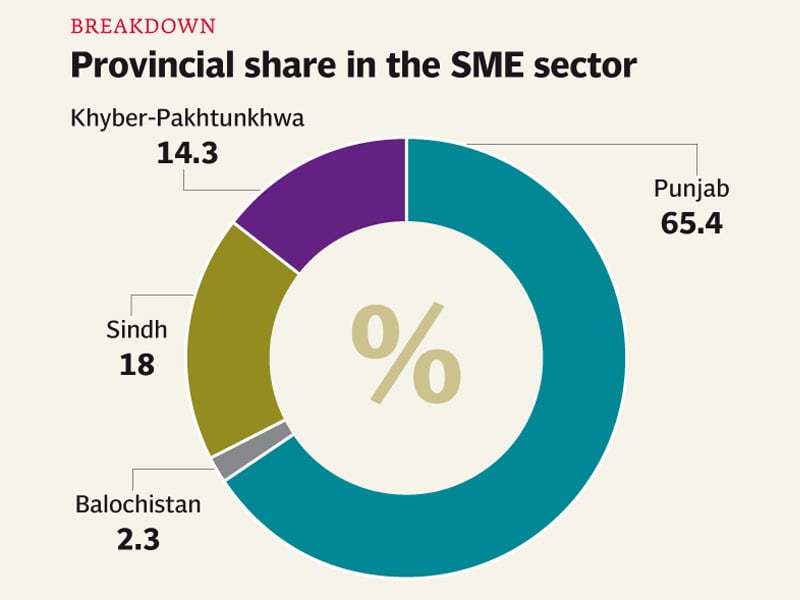
Small and Medium Enterprises Development Authority (SMEDA) Director Zulfikar Thaver said on Tuesday the role of small and medium enterprises (SMEs) will be most important in achieving the objectives of Pakistan Vision 2025 – a long-term plan for sustainable economic growth.
Addressing the Pakistan SME Forum 2014, Thaver said the development of the SME sector will lead to employment generation and increase national income.
The number of SMEs in Pakistan is estimated to be 3.2 million, with the SME sector’s contribution to the national gross domestic product (GDP) being 40%. With a share of 30% in Pakistan’s total exports, SMEs are spread all over Pakistan with a significant concentration in Punjab (65.4%). The share of Balochistan in the country’s SME sector happens to be the smallest (2.3%) while those of Sindh and Khyber-Pakhtunkhwa are 18% and 14.3%, respectively.

Presenting the three-pronged operational strategy, he said an enabling environment should be built by changing the policy and regulatory framework while reducing the overall cost of doing business in Pakistan.
Highlighting the importance of developing clusters and sectors, Thaver said SME development organisations are now addressing the problem by setting up common facility centres and carrying out sector-specific studies.
Wholesale, retail, restaurants and hotels represent 52.9% of the SME sector while agriculture, forestry, hunting and fishing have a collective share of only 1.5%.
Making a presentation on the state of SMEs in Pakistan, SMEDA CEO Muhammad Alamgir said 99% of economic establishments are SMEs while the shares of SMEs in India, China and Malaysia are 80%, 99% and 90.2%, respectively.
In terms of its contribution to the GDP, he said Pakistan’s SME sector is ahead of India’s (17%) and behind China’s (60%) and Japan’s (55%).
However, in terms of total goods exported, Pakistan’s SME sector has a share of 30%, which is less than those of India (40%), China (68%) and Japan (38%). In terms of non-farm employment, the share of Pakistan’s SME sector is 80%, which is less than China’s (82%) but higher than India’s (35%).
Alamgir said low technology base, lack of access to finance, lack of market information, limited skill development opportunities, regulatory hurdles and low value addition are the major impediments in the SME sector’s growth in Pakistan.
Noting that the development of the SME sector is most critical in employment generation, he said the average cost per job created in a spinning mill (large-scale sector) is Rs1.1 million while the same is only Rs75,000 in a garment-manufacturing unit (SME sector).
Speaking on the occasion, State Bank of Pakistan Executive Director (SMEs) Samar Hasnain said the financial performance of SMEs that utilised bank loans has shown significant improvement of late.
He urged banks and financial institutions to extend financial support to the SME sector. Although it demands extra analytical measures, the SME sector promises safe and healthy returns for the regulated banking sector, he said. “The default rate of SMEs has always been less than 1%,” he noted.
Published in The Express Tribune, August 20th, 2014.
Like Business on Facebook, follow @TribuneBiz on Twitter to stay informed and join in the conversation.







1733949940-0/image-(8)1733949940-0-270x192.webp)















COMMENTS
Comments are moderated and generally will be posted if they are on-topic and not abusive.
For more information, please see our Comments FAQ